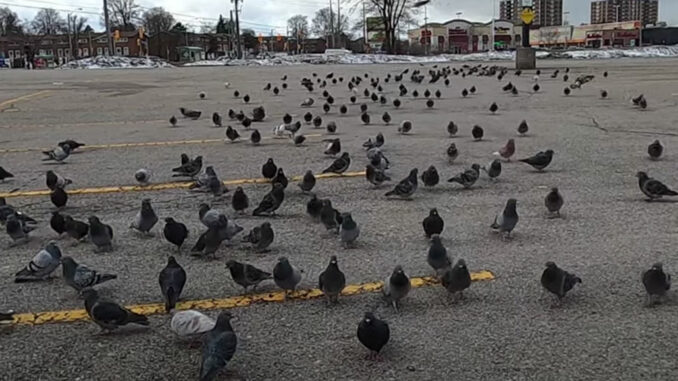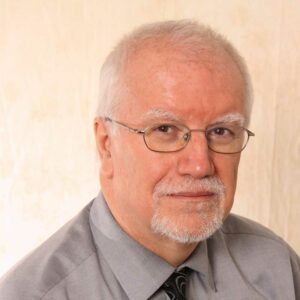
There are two types of people – those who love pigeons, and those who harbour somewhat less positive views of these street doves. This truth was on full display in Leaside during the 1930s and 1940s, when – on two separate occasions – residents battled each other in court over the legality of keeping and raising the animals Woody Allen once termed “rats with wings.”
Round 1 – Thomas Joyce vs James Martin
On Jan. 29, 1935, Leaside municipal council passed a bylaw prohibiting in residential areas pigeons and other animals such as goats, cows and pigs.
Shortly thereafter – in June – the law was tested when Thomas Russell Joyce of 17 Bessborough Drive complained to the council that his next-door neighbour, James Martin, kept as many as 48 pigeons on his premises. As then reported in the Toronto Star, Mr. Joyce said the pigeons’ cooing woke him up in the early morning and caused him stress during the day by flying over his property and interfering with his gardening. An angina sufferer, he argued the birds were “injurious to his health.”
In response, Martin claimed that his pigeons were homing pigeons and could not easily be relocated as they would just fly back. In addition, he produced a letter from the Canadian Homing Pigeon Union asserting that the Department of National Defense supported keeping pigeons because they might be useful in time of war.
The case ended up in the county court where Magistrate Douglas Davidson heard additional testimony from a builder who said the pigeons had negatively impacted real estate business in the area and had also damaged his car. Agreeing with the plaintiff’s position, Davidson ordered Mr. Martin to remove the pigeons and pay a $10 fine.
Matters didn’t end there, though. Martin must have appealed the ruling because three months later it was reversed – on the grounds that Leaside had no legal right to ban pigeons. Judge Honeywell of the Appeals Court ruled that the Municipal Act of Toronto excluded pigeons from its list of banned animals, rendering Leaside’s bylaw invalid. Round 1: pigeons.
Round 2 – Henry Dwyer vs Jacob Schneider
Fast forward 11 years to June 1946, and it’s déjà vu all over again. This time the scene was north Leaside, where the complainant was the American Vice-Consul in Toronto, Henry T. Dwyer. Mr. Dwyer had recently bought a house on Donlea Drive from one Jacob Schneider, not knowing at the time that Schneider (also his next-door neighbour) kept at least 30 pigeons. Dwyer sued under Leaside’s anti-pigeon bylaw, which was still in force. When his case was dismissed, Dwyer appealed. At the appeals hearing he testified – as reported in the Globe and Mail of June 20, 1946 – that the pigeons circled around his house, depositing “a great deal of excrement on our front door and on our roof,” not to mention “when my wife put the laundry out.”
Schneider’s lawyer – John Markus – countered by arguing that Leaside had no right to ban pigeons in residential areas. He also called Leaside’s highly respected town clerk Richard Burgess to testify. Burgess admitted that he had kept pigeons at his house since 1910. This prompted Markus to claim that if a prominent official like Burgess kept pigeons, it could hardly be called unlawful.
The appeals judge, Ambrose Shea, initially postponed judgement on the case. But in September, he upheld Leaside’s right to ban pigeons, found Mr. Schneider guilty, and fined him $20. According to the Star, the decision marked the first time Leaside’s anti-pigeon bylaw had ever been enforced.
Round 2: Leaside.
Postscript
That should have settled things. But in 1970, the issue surfaced again when Leaside resident Rose Dixon wrote to the Toronto Star complaining that her next-door neighbour had a shed full of pigeons, but “nothing is being done.” East York Mayor True Davidson responded by assuring her that legal action was being taken. Unfortunately, we don’t know the outcome of the dispute.
Which proves there will probably always be pigeons for Leasiders to love or hate – as anyone knows who’s driven past the Thorncliffe Mall parking lot.


